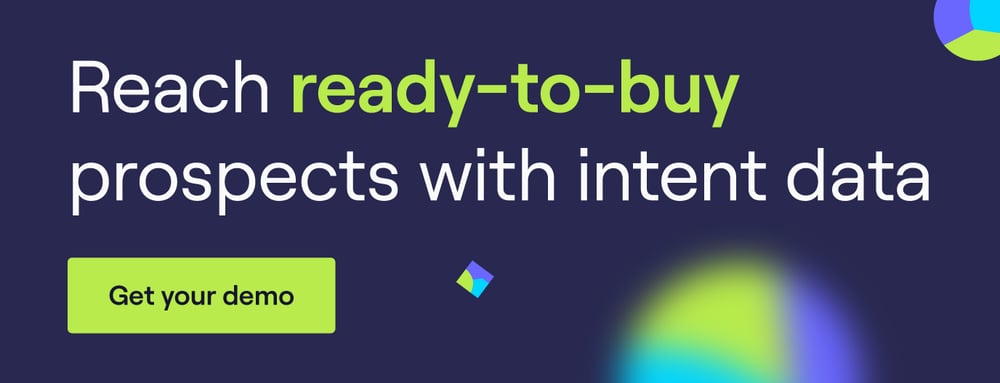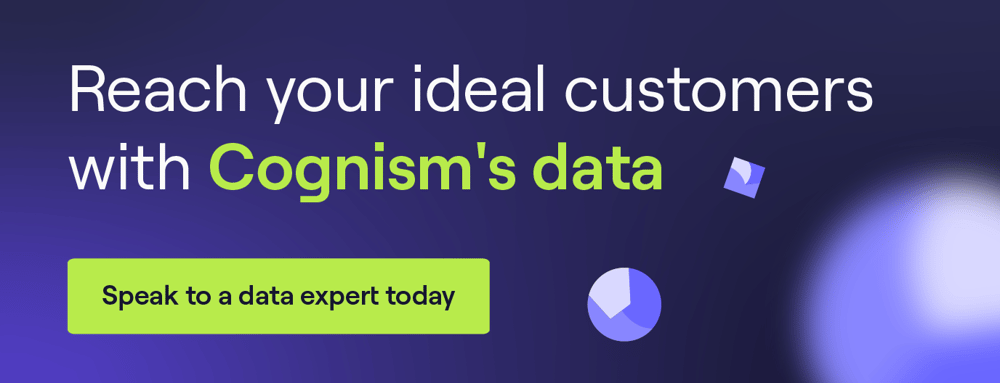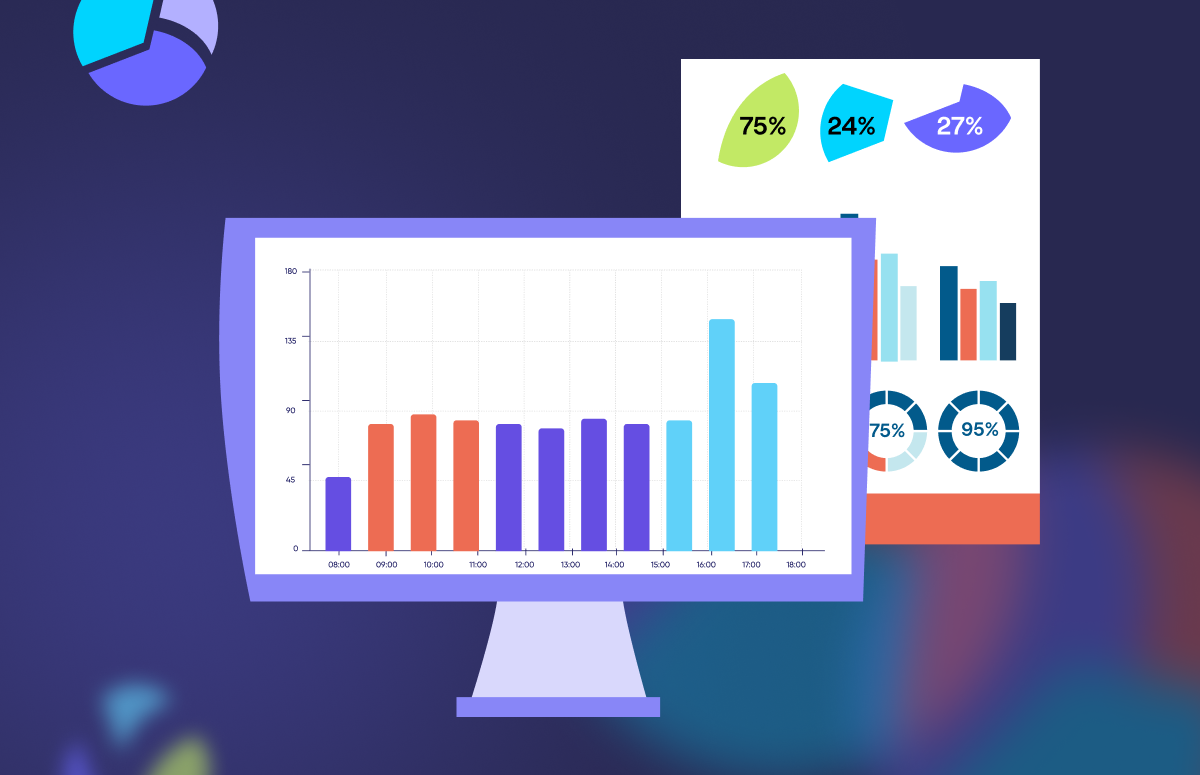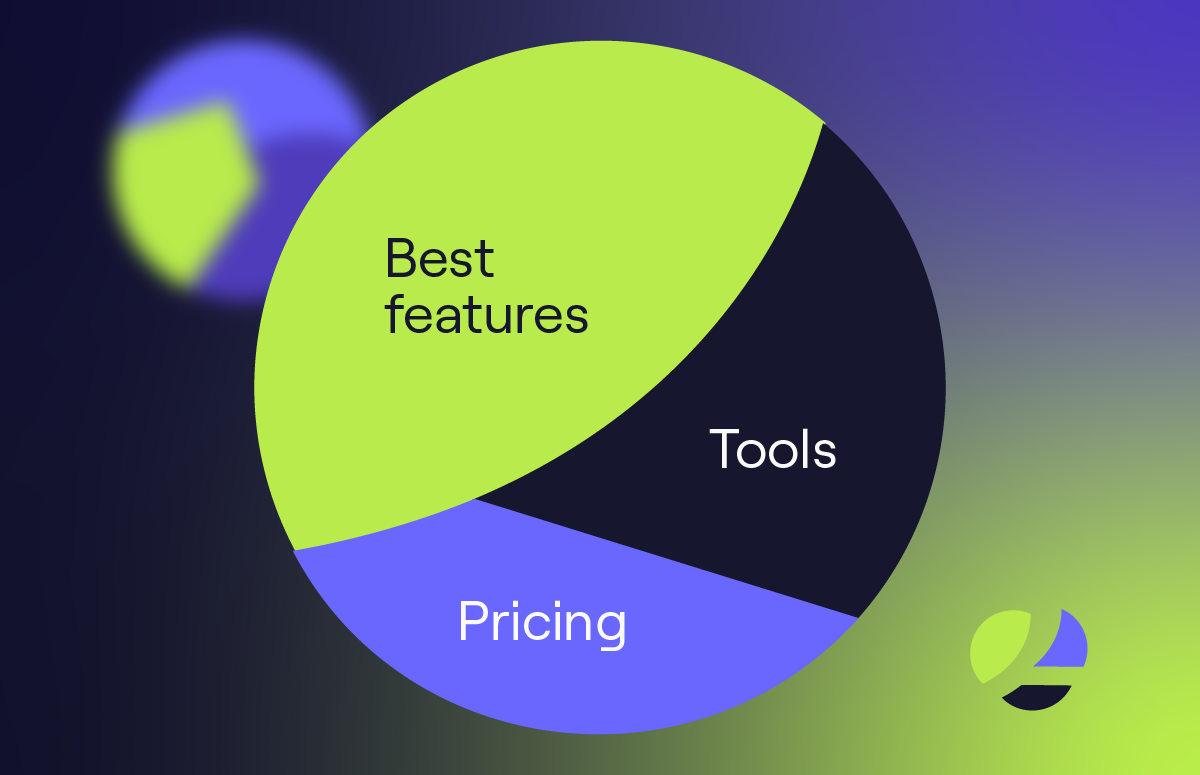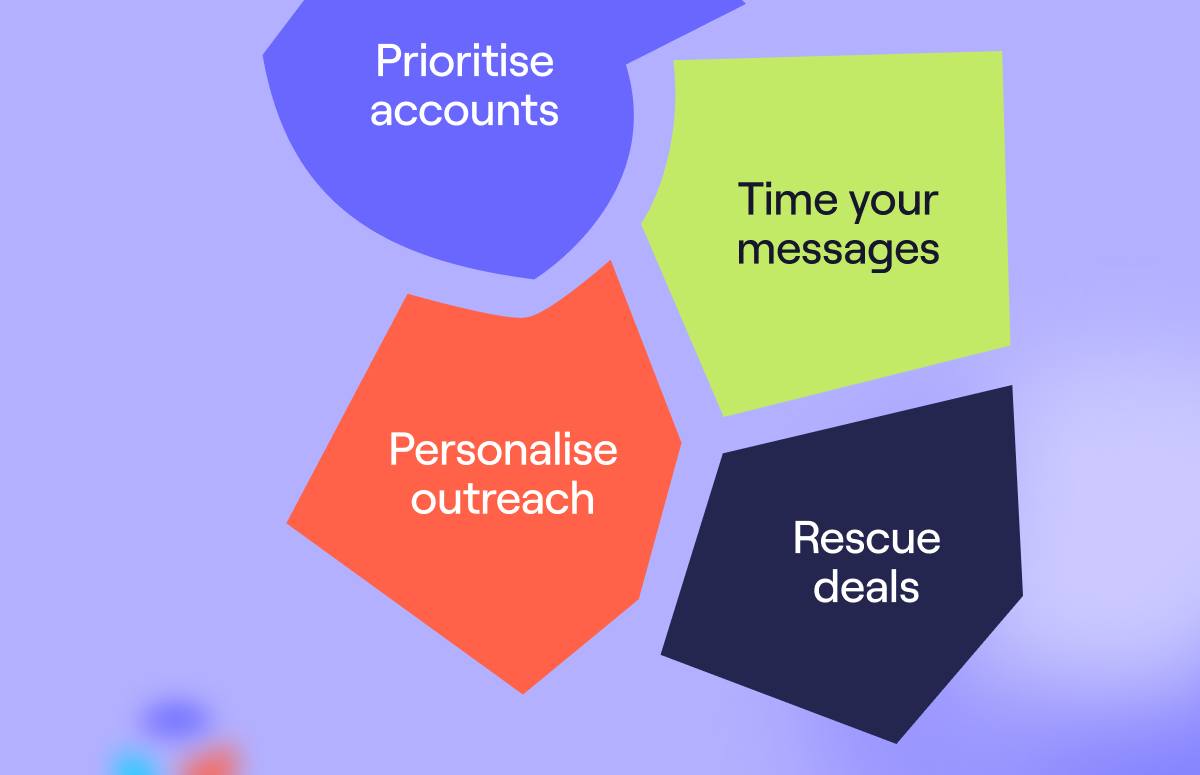B2B Technology: How to Buy Guide for 2025
It’s tempting to go on a spending spree for B2B technology tools and never stop buying.
But is your team actively using the tools you’ve purchased, and is the software driving the desired ROI?
Following a framework makes it possible to make the right purchasing decisions and avoid using tools that continue to charge monthly subscriptions.
In the article, we’re exploring:
- The benefits and definition of B2B technology.
- How sales, marketing and RevOps can use tech to scale.
- What to look out for when investing in technologies.
- Examples of software to add to your B2B tech stack.
Let’s get started 👇
What is B2B technology?
A B2B technology stack or “tech stack” describes all the software and applications your company uses.
Various B2B tools and apps are available to improve sales and marketing efforts. The tech stack’s role is to make work easier or faster; most sales and marketing teams expect the tools they use to improve their internal processes and customer experiences.
An example of B2B sales technology that works is intent data tools. Intent data helps you increase your close rate by actively reaching out to prospects searching for a product like yours in real-time.
By reaching out to buyers at the consideration stage, your team can establish more valuable conversations with prospects and convert them faster.
You can easily measure the results that intent data delivers — just check the close rate on previous sequences and the ones sent to in-market prospect lists.
Another example is when B2B tools or software are signed with a code signing certificate; this assures that the code is intact and has not been modified since it is signed.
What are the benefits of adding B2B technology to your tech stack?
For sales
An effective B2B technology stack can benefit your B2B sales team. Learn how to win the sales race by choosing the B2B stack wisely.
1. Faster lead generation
Lead generation is a time-consuming and tedious process if done manually. With lead gen tools, you can source thousands of verified prospects, their names, and contact details at the simple click of a button.
2. Increased productivity
It’s estimated that sales reps spend up to 22% of their time generating leads, whether prospecting (cold calling, sales emails, and appointment setting) or researching (searching for target accounts and building contact lists).
With B2B sales technology, you can get B2B data within a few clicks.
3. Instant problem-solving
Modern sales tools visualise data and deliver insights on possible improvements to the sales process.
As a result, you can identify bottlenecks or issues faster and take steps to remove them without spending weeks on data analysis and working on Excel sheets.
4. Improved forecasting and analytics
Innovative B2B technologies such as AI offer insights and create predictions based on historical data. In real-time, they analyse millions of data entries so you can instantly get a complete picture of your sales performance.
5. Greater flexibility
B2B SaaS technology can quickly adapt to your team’s changing needs. This software usually offers dozens of integrations, so you can work with many tools without losing information about customer interactions.
For example, you can easily integrate most tools with your company CRM and record interactions there.
For marketing
By applying a modern B2B tech stack to SEO, PR, content, and analytics, your B2B marketing can benefit. Let’s look at how B2B technologies can improve your B2B marketing strategies:
1. SEO and keyword research
You can source keywords that help your target audience find your business online, optimise your blog content based on this research, and track competitors’ efforts in this domain.
2. Planning and communication
B2B marketing technology lets you structure your team’s work better, aligning everyone on their tasks and goals and improving remote work collaboration.
Many new tools, from file storage services to collaboration software and project management platforms, make day-to-day marketing and sales activities easier and more efficient.
3. Content creation
You can utilise tech in areas as diverse as website creation, video production, infographic design, webinar and podcast recording, blogging, and writing assistants.
You can expect even more innovations in this field as the popularity of content marketing increases.
4. Connecting and engaging
B2B technology helps you distribute your content and reach your target customers fast.
For example, you can use social media management platforms to activate and share your content with prospects or automate your ABM campaigns.
5. Tracking and measuring
You can drive more meaningful insights from the available marketing data you collect. Modern digital marketing tools let you attribute growth to specific channels, get a granular view, and build a strategy.
These B2B tools let you focus on money-making activities (and ditch those that don’t bring in revenue and brand exposure).
For RevOps
1. Attribute revenue better
The key to good revenue operations is understanding where the money comes from. With B2B technology for RevOps, you can see what pushes your business forward and what initiatives drain revenue without bringing ROI.
2. Enhance cross-team collaboration
RevOps can use team collaboration tools to organise brainstorming sessions, plan everyday activities better, and stay accountable.
The outcome? You’ll eliminate silos and get your teams to work together more closely.
What are the most popular technologies for B2B?
- B2B data providers — access comprehensive and accurate data about other B2B companies, identify and target potential customers, enhance lead generation efforts, and improve overall sales and marketing strategies.
- Video conferencing tools — provide real-time audio and video communication between individuals or groups and facilitate virtual meetings, presentations, and collaborations.
- Business intelligence platforms — collect, analyse, and present large amounts of data and get insights and visualisations through dashboards, reports, and data mining tools. With these tools, you can understand your operations, identify trends, and uncover actionable insights that drive performance improvements.
- Content management systems (CMS) — help create, organise, and publish digital marketing content. You can manage website content, digital assets, and documents more efficiently.
- Customer relationship management tools — streamline sales, marketing, and customer service processes, improving B2B customer satisfaction and retention.
- Digital asset management systems — simplify marketing workflows and keep assets organised to meet the demands of the dynamic market.
How to buy B2B tech the right way
Now that you understand B2B sales technology better, it’s time to review a step-by-step process to select the right provider.
1. Discover technology challenges
The B2B software you choose should solve problems preventing your team from achieving its full potential.
Start by examining your revenue generation process from marketing and sales to customer success. Look for the areas that need improvement in this process and identify what tools could fix the issues.
2. Audit your existing tech stack
Check your tech stack to see if you could solve your problem with a tool you already have.
So many B2B teams have solutions lurking in their tech stacks that people either don’t use fully or not at all.
Some extra training on your existing tech could solve your problem faster and be cheaper than bringing in something new.
3. Map your tech to your sales and marketing process
When you have an idea of the B2B tech stack you need, map it back to your B2B sales and marketing process to ensure both are aligned. Pinpoint the parts of your sales cycle that your new tech will improve and think about how it will affect the rest of it.
4. Set up a buying team
It may be just your sales team who will use this tech, but buying it, implementing it, and dealing with its results could affect everyone in your organisation.
When buying a tool, you should approve the decision with everyone affected — sales, marketing, product, customer success, finance, and legal.
5. Investigate your options
Conduct as much research as possible into the available solutions:
- Visit company websites and LinkedIn pages to understand their USP.
- Read the user reviews on G2 to understand what customers like and dislike about a tool.
- Talk to peers in your industry to find out what they use and how it works for them.
- Look at the prices of each solution and see how it fits in with your budget.
6. Arrange demos
After your research, you should have a shortlist of B2B tech that may be the answer to your problem. Now, it’s time to get hands-on!
Call the outbound sales teams for the solutions on your shortlist and get them to demo their products. Attend each demo with a list of questions for the vendor. During the demo, focus on the benefits of each product rather than product features.
7. Sign up for a free trial
Some (but not all!) B2B technology companies will offer free trials of their products. These can give you a taste of how the product works and what it will do for your organisation.
If you can, commit to free trials. That way, you can A/B test the different technologies and evaluate what will work best for your company.
8. Make the purchase
Ensure you negotiate with the B2B technology company, as you may get a lower price or add-on extras. But after that, it’s time to sign on the dotted line and get started with your new tech.
Ensure everyone who uses or is affected by your new tech goes through a detailed onboarding process; everyone must be able to use it to its full potential and get the best results from it.
9. Evaluate and improve
Making the purchase isn’t the end of the buying process. You need to confirm the tech you bought works effectively and solves the problem you purchased it to fix.
Conduct regular reviews to ensure you get what you need. Talk to the teams who use it daily and study its analytics features.
What are examples of B2B technology?
There are hundreds of tools that you can buy — it all depends on your current team’s needs and goals.
However, if you want to know -here are the top three tools every team should have in their arsenal:
1. Cognism
The first B2B technology example is Cognism - a B2B technology buyers database that helps you find accurate and up-to-date B2B contact data.
It also offers intent and signal data that lets you explore prospects who are in-market for your solutions. Its data accuracy reaches 87%, and its database is frequently updated.
In addition, with Cognism’s Diamond Data®, you get access to phone numbers that are manually verified. This AI-powered B2B technology tool helps your sales team reach decision-makers faster than the competition, meaning they’ll close more deals in less time!
Interested? Check out Cognism’s pricing.
2. LinkedIn Sales Navigator
The second B2B technology example is LinkedIn Sales Navigator - a specialised tool that helps you collect the correct information and insights for outreach campaigns.
It’s the world’s largest professional networking platform; with it, sales teams can connect with potential customers and leverage personalised messaging.
This tool enables sales reps to build relationships, uncover new opportunities, and stay up-to-date on prospects’ activities.
3. Quicksight
Quicksight is a business intelligence platform that Amazon Web Services (AWS) offers to streamline data visualisation and analytics for sales, marketing, and RevOps teams.
With Quicksight, users can easily create interactive dashboards, charts, and reports from various data sources, empowering them to explore and understand complex datasets.
By visualising key metrics and trends in a user-friendly interface, Quicksight enables data-driven decision-making, providing real-time data insights that drive revenue optimisation, marketing effectiveness, and operational efficiency across the organisation.
Upgrade your tech stack with Cognism
Cognism's Sales Companion is a B2B technology you need to add to your stack right away!
It makes prospecting easier with AI-powered, personalised insights and takes the compliance burden off your teams’ shoulders so they can connect confidently with the buyers you want to do business with.
Give it a try - click the banner for 25 free leads 👇
